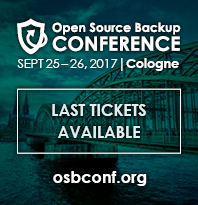Wenn man sich mit einem eigenen Linux Storage Servers beschäftigt hat man sicher schon davon gehört: ZFS. Ich beschäftige mich schon seit längerem mit ZFS und bin an einem Punkt an dem ich mir die Menge der Kommandos nicht mehr merken kann. Zu ZFS findet man zwar schon sehr viel im Internet, die Themen Snapshots oder verschlüsselte ZFS-Datasets fehlt aber leider meistens oder die Informationen sind nicht gesammelt an einer Stelle zu finden. Damit ich in Zukunft nicht immer suchen muss und Ihr auch etwas davon habt, schreibe ich hier alles zusammen.
Installation von ZFS unter Debian / Ubuntu
Die Installation wurde unter Debian 10 (Buster) und Ubuntu Server 20.10 (Groovy Gorilla) durchgeführt. Das Einbinden des Backports Repos ist für Ubuntu Server 20.10 nicht notwendig.
# apt-get update
# apt-get upgrade
# vi /etc/apt/sources.list.d/buster-backports.list
deb http://deb.debian.org/debian buster-backports main contrib
deb-src http://deb.debian.org/debian buster-backports main contrib
# vi /etc/apt/preferences.d/90_zfs
Package: libnvpair1linux libuutil1linux libzfs2linux libzpool2linux spl-dkms zfs-dkms zfs-test zfsutils-linux zfsutils-linux-dev zfs-zed
Pin: release n=buster-backports
Pin-Priority: 990
# apt-get update
# apt-get upgrade
--> Reboot (falls es ein Kernelupgrade gab)
# apt install dpkg-dev linux-headers-$(uname -r) linux-image-amd64
# apt install zfs-dkms zfsutils-linux
Erstellen eines einfachen ZFS Storage Pools
Mit folgendem Kommando wird ein ZFS Storage Pool namens „data“ erstellt. Dank „raidz1“ wird eine Redundanz aufgebaut und eine Festplatte kann ohne Probleme ausfallen. Es ist unter anderem auch möglich „raidz2“ oder „raidz3“ zu definieren.
# zpool create data raidz1 sdb sdc sdd
# zpool status
Erstellen eines ZFS Storage Pools mit Partition UUIDs
# ls -la /dev/disk/by-partuuid/
# zpool create data raidz1 00b85ce9-a0d5-9340-b347-cd0bcc714dc0 04c20b90-5678-4b88-af49-21db76427eda 0c35cb57-5bc6-7c49-929f-466102c22d05
Erstellen eines ZFS Datasets
# zfs create data/playground
Erstellen eines verschlüsselten ZFS Datasets
# zfs create -o encryption=aes-256-gcm -o keyformat=passphrase data/playground
# zfs get encryption
Erstellen eines ZFS Snapshots
# zfs snapshot data/playground@`date +%Y-%m-%d_%H-%M-%S`
Löschen eines ZFS Snapshots:
# zfs destroy data/playground@2020-09-12_17-25-42
Durchsuchen von Snapshots (z. B. zum Restore einzelner Daten)
# cd /data/playground/.zfs/snapshot/2020-09-12_17-25-42
# ls -la
Hinzufügen eines SSD-Caches
Erzeugen des Dateisystems auf der Partition:
# zpool create -f log /dev/sde1
# zpool create -f cache /dev/sde2
Löschen des Dateisystems:
# zpool destroy log1
# zpool destroy cache1
Hinzufügen von Cache und Log zum ZFS Pool:
# zpool add data log /dev/sde1
# zpool add data cache /dev/sde2
Vorsicht: In diesem Beispiel ist der Cache nicht gespiegelt / abgesichert! Beim Ausfall der SSD wären die Daten im Cache verloren!
Anzeigen der Speicherbelegung über den ganzen ZFS Pool inkl. Snapshots
# zpool set listsnapshots=on data
# zfs list -o space -r data

 Hello again! Today, we want to present the location for the special OSBConf evening event on the first conference day:
Hello again! Today, we want to present the location for the special OSBConf evening event on the first conference day:

















